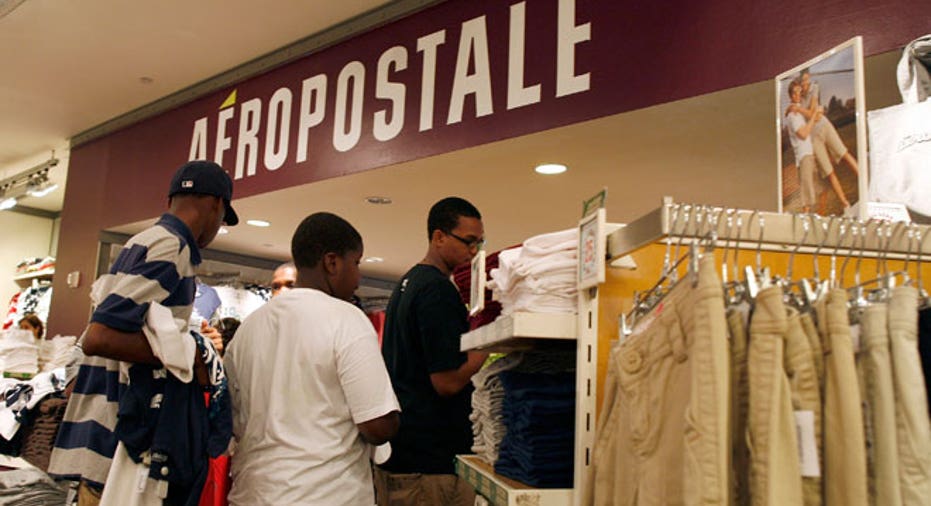Men: Retailers' White Knight?

The retail industry is finding itself increasingly using a different pronoun when it comes to describing shoppers.
“Retail has been accused of being an industry dominated with male executives, but when you talk about the customer, it’s historically been a ‘she.’ That is slowly changing to also give proper attention to male shoppers,” says retail analyst Nikki Bair.
The retail industry is slowly healing after the Great Recession left cash-strapped consumer sitting on the sidelines as they waited for greater economic certainty. As shoppers regain confidence and start spending, experts say men—particularly millennial-aged ones—are spending more on clothes.
And that’s good news for an industry that’s been searching for growth options. “The womens' wear market is completely saturated,” says Will McKitterick, a retail analyst at IBISWorld. “Companies looking to grow and find a new area to expand their revenue have found that (growth) in the men’s wear market.”
According to retail analyst Kristen Bentz, menswear grew 5% in 2013, and shows no sign of slowing down. "This part of the industry is finally something positive to talk about and has some real growth potential. Men want to look polished for the first time in a very long time.”
"This part of the industry is finally something positive to talk about and has some real growth potential. Men want to look polished for the first time in a very long time.”
Research from IBISWorld forecasts men’s clothing stores to bring in $9.6 billion in revenue in 2014, a 2.1% increase from last year. Per capita disposable income is expected to increase during 2014 as the employment situation improves. “Males 25-40 have become more fashionably aware and have the money to be spending,” says Bentz. “Especially millennials that are getting married much later in life and are just starting to spend their income.”
Nordstrom’s recent acquisition of e-retailer Trunk Club emphasizes retailers’ added attention to men. The department store scooped up the monthly membership program for men for an undisclosed amount at the end of July. McKitterick adds that earlier this year, luxury retailer Prada announced it plans to open 50 menswear boutiques in the next three years. In 2013, it only opened four, he explains.
“This is happening right now, right away. There has been a lot of innovation and change with men’s perception of fashion and trends, and that has left many companies scrambling on how to market better to them,” says McKitterick.
While men are paying closer attention to their wardrobe, that doesn’t mean they’re willing to spend hours looking for items to fill their closets. “Men are more focused, they know what they want and don’t want to waste time browsing or trying on a bunch of different things. They also feel more like a failure when they don’t find what they need in a store,” says Bair.
The added focus of men's apparel is a relatively-new trend on the fashion scene, and Bentz points to cultural influences like Mad Men, better-dressed athletes (Carmelo Anthony attended several New York Fashion Week shows), and the rise of online shopping to leading the charge creating a more fashion-conscious male population in the U.S.
“When Weight Watchers first launched online, they noticed a lot more male customers signing up online, but never going to in-person meetings. They just wanted the tools and a safe place online. The same is true when it comes to their clothes shopping.”
Male-focused online retailers, many of which sell only one item, take away the “intimidation factor” and the “overwhelming choices factor,” and get more men buying, explains Bentz. “They know what they need, but they don’t know the ‘how’ or the ‘where’ so any place that simplifies and focuses the process for them is going to win,” she said.
Suits and formal wear make up 32% of the men’s clothing sales, according to IBISWorld, and McKitterick says the advent of the “slim-fit” suit is behind the resurgence. “The introduction of slim-fitting clothing coincided with the health-conscious movement and they just drove each other. They want to look and feel good.”
Male-oriented fashion resources have also become more accessible, adding fuel to the trend.
“This is the opportunity for operators, retailers and designers looking for a way to get out of the slow period,” says McKitterick. “ The male consumer segment is the area of growth over the next five years and can potentially propel them out of the doldrums of this sluggish economy.”



















